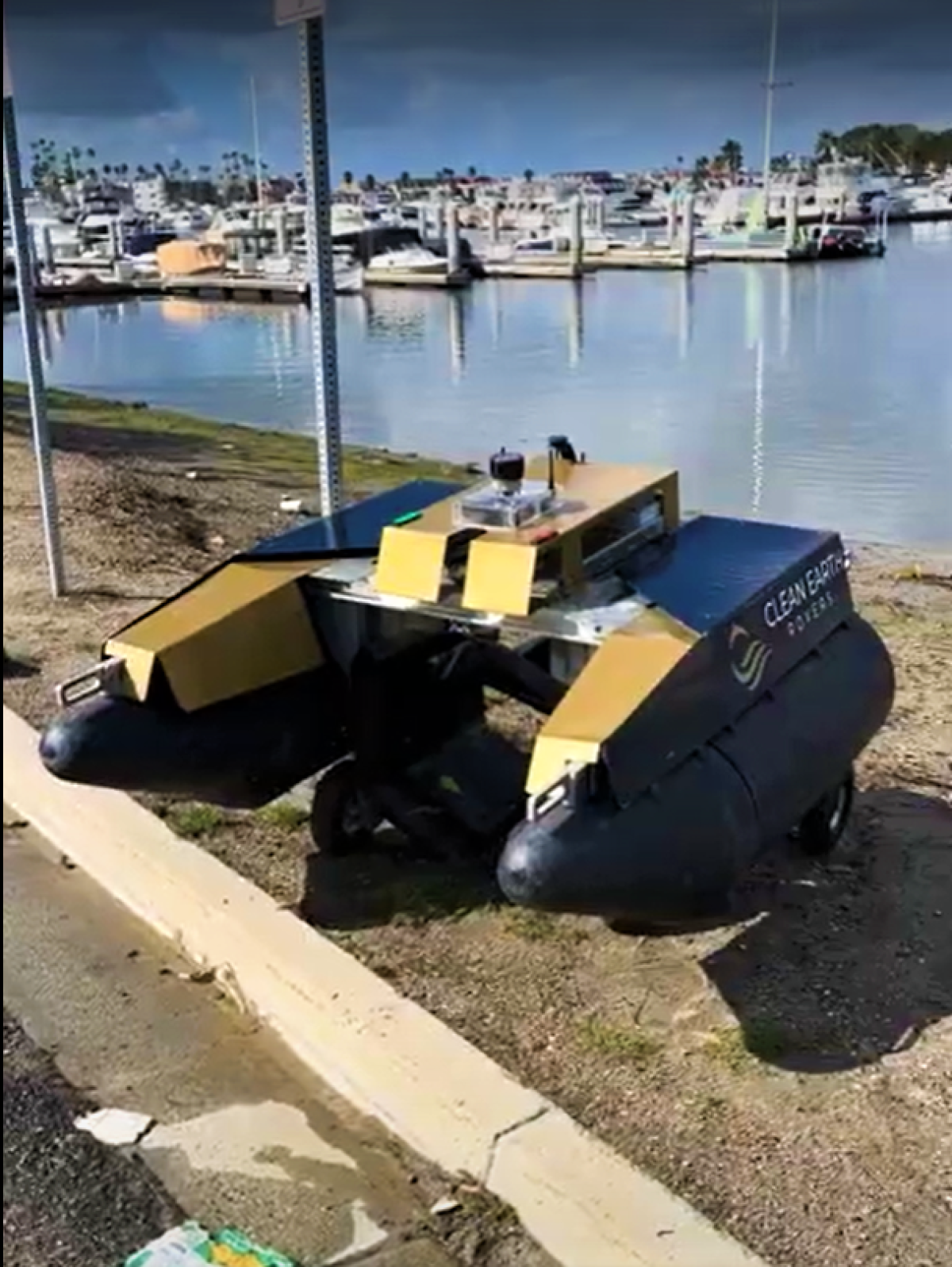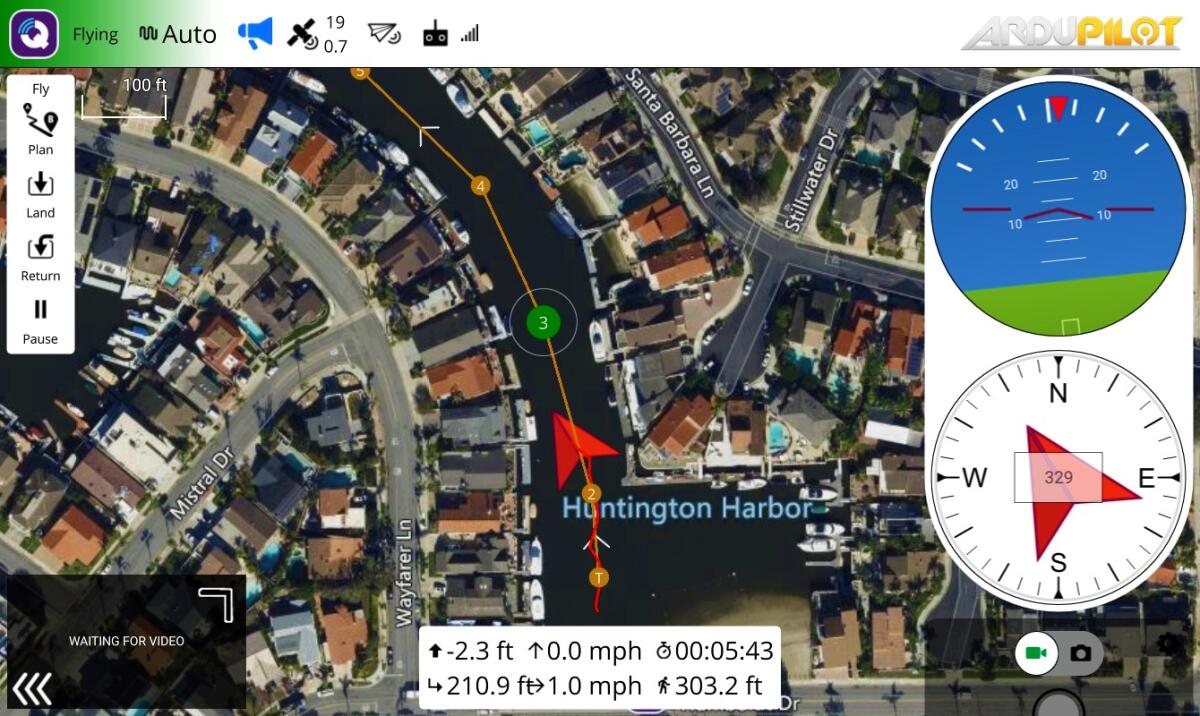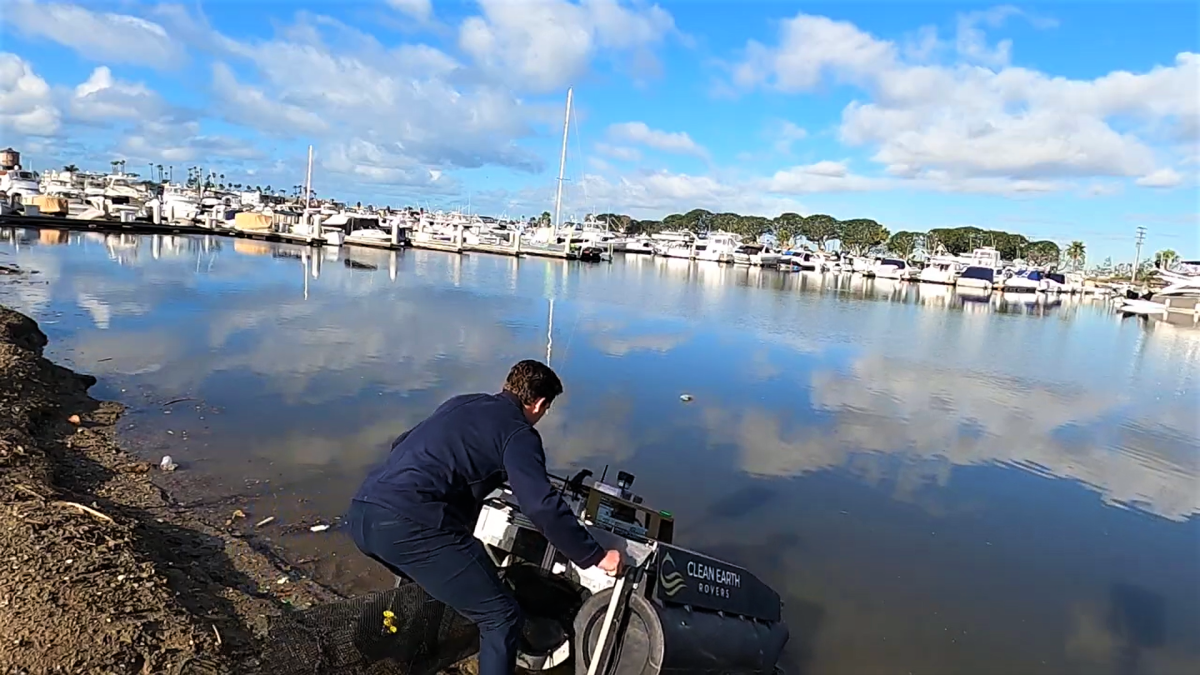Huntington Beach tries out ocean-cleaning robot in hard-to-reach local waterways

- Share via
Recent visitors to Huntington Harbour may have noticed a tiny unmanned vessel skimming along the water, sucking up wayward bits of trash under the direction of a remote-control device being operated by monitors on shore.
Spectators near enough for a close-up look may be able to make out the words “Clean Earth Rovers” on the hull of the craft. At 5-feet by 5-feet, the vehicle may be small, but its mission is mighty — to leave local waters in a pristine condition.
As part of a two-month, $10,000 pilot project being conducted by the Huntington Beach Public Works Department, the rover is being deployed twice weekly to two hard-to-clean harbor areas to test out an innovative technology in real-world conditions.

Sort of a Roomba for waterways, the autonomous vessel is much more than a mere vacuum, according to Michael Arens, co-founder and chief executive of Clean Earth Rovers. In addition to picking up trash from the surface of the water, it has the capacity to absorb oil and clean algal blooms.
“If you were to go out and do all this by hand, you would need a minimum of two people in a boat. Then you’d have to have the budget for that boat, and for fuel and storage and also the labor,” Arens said of typical cleanup efforts.
“It’s a heavily manual process. You’re relying on a lot of people to do it by hand, and anything out of reach of their pool skimmers is gone with the wind.”
Arens, 25, explained how he and co-founder David Constantine developed the device as business students at Cincinnati’s Xavier College, after Arens won a pitch contest for entrepreneurs.
They both had a passion for finding solutions to clean up ocean plastics and so set about building a machine capable of cleaning out hard-to-reach areas in an efficient and cost-effective manner.

After the company was established in Cincinnati, the pair moved to California and set up an operations hub in Long Beach. Arens lives in Costa Mesa, while Constantine lives in Oceanside, and the pair have begun pitching local municipalities on the technology.
A single rover or an entire fleet can be controlled by a handheld device or through a user app accessible to clients remotely or on shore. Maps can be uploaded, providing a course for the vehicles to follow, and sensors on the craft can detect other vessels and avoid collisions.
Clean Earth Rovers has also created DataPod, a floating buoy that can monitor several aspects of water quality — including temperature, PH, turbidity and dissolved oxygen levels — in real time.
“We monitor six different metrics of data then we send all of that to the cloud every 15 minutes,” Arens said. “That allows cities to have real insight into their water quality. And it’s just as simple as putting a buoy in the water and letting it do its thing.”
Arens reached out to a few Orange County cities and conducted a demonstration in the city of Newport Beach last May. Among the crowd was Jim Merid, environmental services manager for Huntington Beach Public Works.

“We were very interested, in fact, as it’s a small maneuverable vessel that can be operated manually as well as autonomously,” Merid said Friday.
He explained that the Bolsa Chica Channel feeds into Huntington Harbour and often distributes trash and debris into the infrastructure following a storm. If no one can reach it, it just sits there and disintegrates, sometimes releasing harmful microplastics into the water.
“A lot of the smaller trash ends up in pockets and pools and eddies in the harbor for months at a time,” Merid said. “It’s too far from shore but too shallow for a boat to navigate there to clean it up. It creates aesthetic problems as well as environmental issues.”
While the city currently contracts with another company to clean the main channel, there was no mechanism for getting in and around the tight corners of a harbor’s layout. The pilot program will help officials determine whether to continue, or possibly expand, use of the rovers.

Other Orange County cities are beginning to take interest in the service, according to Arens. Units can be purchased outright, or clients can pay for a per-cleanup service that includes trash collection and disposal. Each battery-powered unit can run for up to 20 hours at a time and can pick up around 150 pounds of trash per load, though most floating trash is light and bulky.
Merid said just two weeks into the pilot program, the results are promising. People in the boating industry are beginning to ask about the technology and whether it might be put to private use.
“Whenever we’re out there deploying this we get four or five people who come out and are really interested,” he added. “We’ve gotten a lot of positive feedback, so that’s really exciting. We can’t move forward with a project like this if there isn’t any buy-in from the community.”
All the latest on Orange County from Orange County.
Get our free TimesOC newsletter.
You may occasionally receive promotional content from the Daily Pilot.






